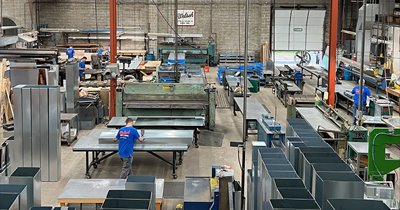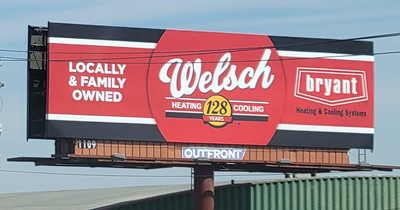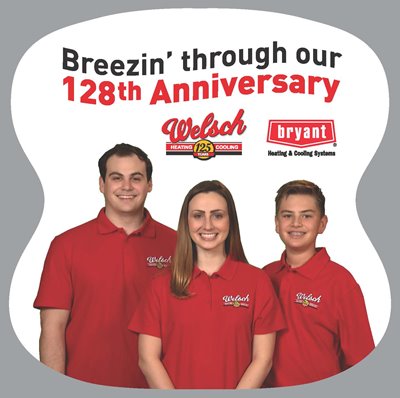
Some of Welsch's most reliable marketing tactics include billboards, online ads and positive company reviews.
When Welsch Furnace was founded in 1895, the only marketing the company did was paint its name on the side of a horse-drawn wagon.
The wagon held parts and tools for installing and repairing potbelly stoves around St. Louis.
Almost 130 years later, marketing for the residential firm, now called Welsch Heating & Cooling Co., is a little more sophisticated — just like the HVAC equipment it sells and services throughout the region.
Today’s customers might see the Welsch name attached to an email. Or they may click on the company’s Google ad when they’re searching for a repair contractor.
If the marketing methods are more advanced, the goal hasn’t changed: To keep the Welsch name prominent in the minds of the 2.8 million people who call St. Louis home.

In an industry where many homeowners focus on price, it’s not always easy to stand out, says company President George “Butch” Welsch. The 81-year-old is the fourth generation of the Welsch family to head the company.
Marketing has gotten complicated
In addition, HVAC marketing has gone from a simple choice — how big of an ad to buy — to a complex decision encompassing demographics, internet search engines and website blogs.
“It used to be when you were in the heating and air conditioning business, you’d put an ad in the Yellow Pages and maybe the daily newspaper,” Welsch says. “You could pretty much hit practically anybody in your market. Those days are long gone. It’s a different market now, and it keeps changing.”
But Welsch says his family’s company has done its best to keep up with technology while not abandoning the traditional advertising options that have helped it build a base of 16,000 active customers. That’s why St. Louis residents still see the company’s name on roadside billboards and hear it announced on public address systems as a sponsor of family nights at local theaters.
“We still like billboards,” Welsch says. “And the reason we still like billboards is there are still a lot of cars on the road. It’s one thing that they can’t turn off. They can’t change to another channel.

“Our basic message is very simple on them,” he says. “Have (our) name as big as possible. It’s for name recognition. We’re not trying to get people to call us from the billboard. When the time comes, and they need heating or air conditioning services, they remember that they saw the name “Welsch.”
Online ads drive customers to the company’s website
To reach potential customers who may pay more attention to their smartphones than billboards, Welsch Heating uses some of its $250,000 annual marketing budget on pay-per-click (PPC) online advertising. With it, companies like Welsch pay to get their listings in a prominent spot on search engines like Google or social media platforms such as Facebook. Then they pay an additional fee whenever someone taps — or “clicks” — on the ads.
That makes results easy to measure.
“We get a pretty good return on investment with that, although it’s been decreasing,” Welsch says. “So we’re debating whether or not we’re going to stick with that one.”
He points out that the company’s website has also become an important marketing tool. When the temperature in St. Louis rises, so does traffic to its website.
“That’s how I knew that yesterday was an extremely hot day in St. Louis,” Welsch says. “We had 17 service requests through our website and this is during the day when we’re open. It was just amazing,” Welsch says.
Positive online reviews are critical
And, hopefully, he adds, some of those customers will leave a good review on sites like Google or Yelp.com after the service call. With many potential customers doing internet research before hiring a contractor, positive online reviews have become essential. Welsch Heating requests satisfied customers leave a review and showcases those comments on its website.
However, despite all the advertising avenues available today, Welsch says his company still struggles with figuring out the best investments. It’s been an issue for a long time.
“I wish we had better answers,” he says. “There was a saying in our business, even back in the old days, that 50 percent of advertising worked. If we had any idea which 50 percent, we could get rid of the other 50 percent. The problem is it’s about the same way now.”
However, Welsch is quick to add he’s not complaining. Business is good.
“Right now, we’re in a mode where it seems to be working, so we are happy,” he says.